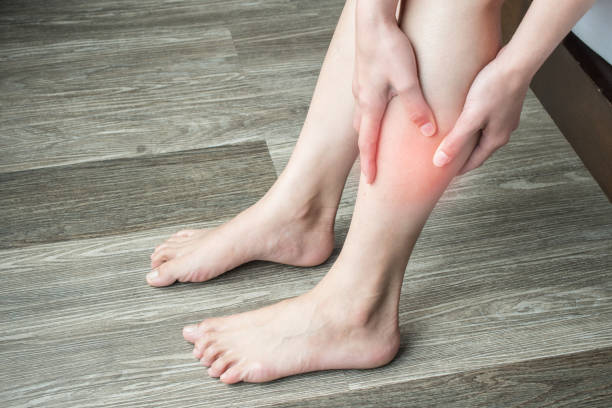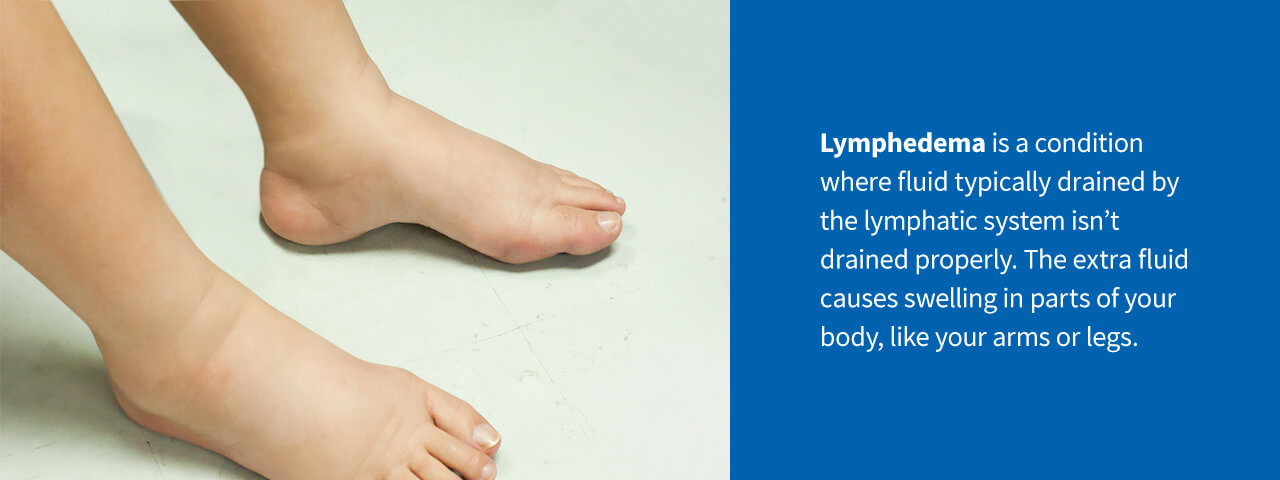
Lymphedema is a medical condition caused by blockages in the lymph system. Patients with lymphedema may experience swelling around major limbs, making movement uncomfortable or difficult. Lymphedema can occur at any age, so it’s vital to take preventative action against its symptoms.
Lymphedema is the buildup or blockage of fluid in a person’s lymph system. The lymph system operates like veins, transporting lymph fluid throughout the body. Lymph fluid contains white blood cells and chyle fluid, both essential for fighting attack bacteria.
A healthy lymph system is a drainage route. With lymphedema, the lymph fluid can not drain properly because of outflow blockage creating high pressure in the lymphatic system. This buildup can damage your entire system and interrupt the flow of lymph fluid toward the heart.
Lymphedema is caused by anything that may block lymph fluid drainage. Some children experience primary lymphedema, which results from improper development of the lymph nodes and vessels. Other common risk factors and causes of lymphedema include:
Lymphedema is common for post-treatment cancer patients because radiation can scar the lymph system. Breast cancer patients may experience lymphedema post-surgery due to lymph vessel damage. If you need life-saving cancer treatment, speak with your doctor about ways to prevent or reduce the risk of lymphedema.
Over time, people with lymphedema commonly experience swelling and stiffness throughout their legs, arms or chest. Depending on the severity of each case, lymphedema can look different for everyone. Common lymphedema symptoms include:
Your lymph system is crucial for regulating movement and transporting white blood cells. Lymph vessels enter subclavian veins, where lymph drainage enters the bloodstream. This step is what brings lymph fluid toward your heart, and a disruption in your veins or lymph system could affect the other.
Some venous diseases can be risk factors for lymphedema. Chronic Vein Insufficiency (CVI) is caused by a buildup of blood in the veins and has similar swelling symptoms as lymphedema.
Extreme CVI cases can lead to lymphedema because the abnormally high pressure present in the venous system acts to compress the lymphatic system creating outflow obstruction.

Lymphedema can start small and worsen over time without proper treatment. Though there is no official cure for lymphedema, it’s possible to live a happy, healthy life while managing your symptoms.
One way to treat symptoms is through gentle exercise. Lymphedema in the legs or arms can make movement painful, so raising the limbs above the heart can assist drainage. If you have lymphedema, avoid any strain on the swollen limb, like getting a blood pressure test or vaccination.
Preventative maintenance is one of the most effective measures to take against lymphedema. Keeping your doctor updated with any symptoms or worsening conditions can help you mitigate the risk of a severe case. Generally, it’s best to avoid blocking your body’s lymph movement as much as you can.
Preventative actions against complications of lymphedema include:
There is no one-size-fits-all cure for lymphedema, but there are many ways to treat and manage your symptoms. Lymphedema treatment aims to control any swelling by releasing the blockage in your lymph system. If there is a deeper root cause like CVI, tumors or rheumatoid arthritis, your physician may treat these conditions first.
The best way to combat lymphedema symptoms is through specialized physical therapy. Your physician may also prescribe an antibiotic for a related infection. As with any medical treatment, your lymphedema care plan will be unique to your needs. You can relieve your lymphedema symptoms with a dedicated team on your side and any of the following treatments:
Lymphedema and lipedema sound similar, and they have some symptoms in common. Medical professionals often misdiagnose both as obesity. Despite those similarities, they are two distinct conditions, and you must seek different treatments for lymphedema and lipedema.
One of the main differences between these disorders is that lipedema involves accumulating fat, while lymphedema symptoms involves fluids. Though the conditions are separate, lipedema can lead to lymphedema.
At Central Florida Vein and Vascular Center, we treat lymphedema patients with productive solutions. We offer the relief you deserve through personalized treatment plans and medical care.
Enhance your quality of life and improve your circulation with high-end treatment from our experts. Discover how to feel happier and healthier with lymphedema treatment near you.
Call us at 407-545-3385 or 352-658-5547 to learn more, or contact us online with questions!